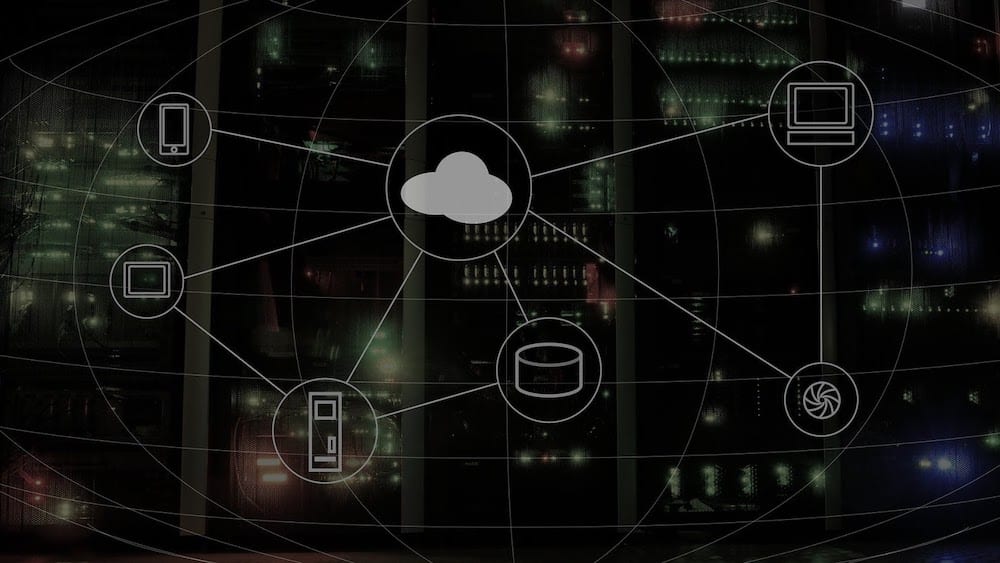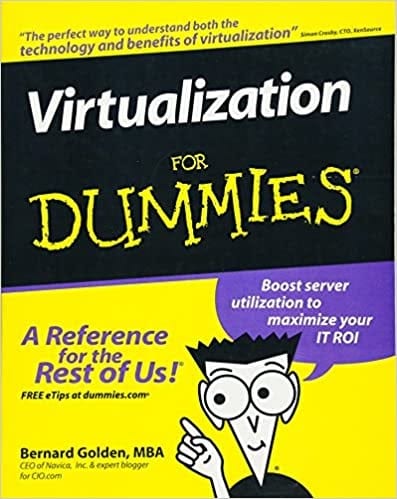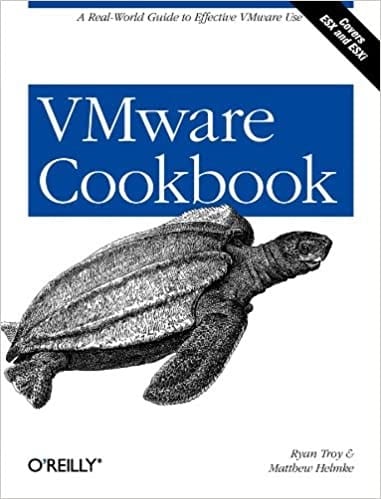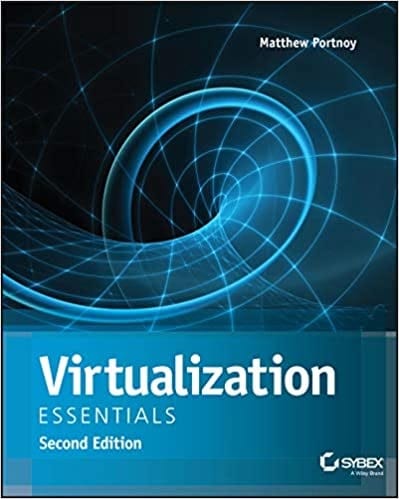There have probably been plenty of times where you have needed to remotely access files from your computer without downloading a different operating system. Maybe you want your employees to collaborate in a streamlined, virtual work environment from anywhere in the world. Or perhaps you just want to play around with a different operating system.
Virtualization will come in handy in all of these cases, giving you the means to make a remotely accessible work environment. But what is virtualization? How can you integrate it into your daily routine?
What Is Virtualization?
Virtualization creates a layer over your computer hardware that copies one or more elements of the hardware to make a virtual machine. A virtual machine, or VM, is a digital recreation of a computer. It allows you to access a central server’s files or run different programs in a separate environment.
These VMs are run by a hypervisor, which is a software, hardware, or firmware solution that hosts one or more machines. Generally, a hypervisor runs on a computer called a host machine, which carries VMs that are referred to as guest machines.
VMs differ from remotely accessed physical desktops because they are always “on” since they are located on a server. If you are trying to remotely access a physical desktop, the computer in question must be turned on at its physical location.
Amid the pandemic, when so many people are transitioning to working from home, there’s a huge demand for people with virtualization skills.
Major companies like Twitter, Facebook, and Nationwide Insurance have already committed to some measure of permanent work from home for their employees. These companies will need people who can create and maintain the necessary infrastructure to keep workflow running smoothly.
What Is Virtualization Used For?
Virtualization allows companies to improve their computing abilities quickly and affordably. Virtualization can be used to test new operating systems and applications in a safe environment without compromising the functions of the original computer system.
Virtualization software is used to create several virtual copies of the same machine, which can streamline workflow. The process is also a key component of cloud computing as companies sell space on their physical servers that can be used to host virtual computers instead.
In the case of cloud computing, companies then offer customers the ability to improve production and borrow power. The customers don’t need to purchase their own expensive servers or other physical resources.
Below, we’ll review some of the most common types of virtualization.
Types of Virtualization
Though there are many uses for this process, these are the types of virtualization you’re most likely to encounter.
Desktop Virtualization
Desktop virtualization is where a host machine runs one or more guest machines, sometimes with multiple operating systems. It is the most common type of virtualization.
Local desktop virtualization is where a single computer runs a hypervisor that allows it to run one or more operating systems. You can use the VM to run more than one OS without changing anything about your machine.
In virtual desktop infrastructure, a central server runs more than one desktop via VMs that users can log in to from other devices. This also allows the users to take advantage of the server’s power and the VM environment, even if their actual machine is much weaker.
Network Virtualization
Network virtualization creates a visualization of a network that administrators can manage from a single console and its hypervisor. If you were to become a network administrator, you would be implementing this method often.
Every hardware element of a network, like switches and consoles, are transferred into a visual software representation that administrators can easily manipulate. This saves businesses quite a bit of time and effort in maintenance.
Storage Virtualization
Storage virtualization combines all storage devices in a network into a single device that can be accessed by anyone who has permission.
The storage is set up in blocks that can be added or removed from VMs at will, allowing for easy management.
Other Forms of Virtualization
Data virtualization allows an application to access all data within an interconnected system. Application virtualization enables an app to launch a self-contained mini-version of a specific operating system so that it can run on a computer that would normally be incompatible with the app.
Datacenter virtualization clones data center hardware and turns it into software, allowing multiple clients to use portions of the center as their own unique data centers with virtual servers.
Central processing unit (CPU) virtualization is the backbone of the virtualization experience. It involves taking a single physical processor and dividing it into many to run the VMs. Graphics processing unit (GPU) virtualization is the same principle as CPU virtualization. It distributes the strength of a single, powerful GPU across multiple VMs for graphics, and AI.
Learning Virtualization

There are many virtualization technologies, but when studying the concept, you’ll usually be learning about the software solutions used by a specific company. It’s a good idea to learn the basics of coding before jumping into a specialized field like virtualization.
You have several options when it comes to learning virtualization technology, including taking classes from major virtualization companies.
For example, VMware provides free access to their online labs, which you can use to test their software. Their free VMWare player is a great way to dip your toes into the pool of virtualization without having to commit to an expensive subscription fee.
Of course, with such intricate concepts, it can help to have an expert walk you through the basics. There are many courses for students of all levels online that can help you get on your way for free, or at a low cost.
How Long Does It Take to Learn Virtualization?
Depending on your skill level and ability to commit to lesson plans, you can learn some virtualization methods in as little as three months to as long as eight years.

"Career Karma entered my life when I needed it most and quickly helped me match with a bootcamp. Two months after graduating, I found my dream job that aligned with my values and goals in life!"
Venus, Software Engineer at Rockbot
As different virtualization environments have different requirements, you should aim to get a certification once you have locked down the basics of virtualization.
The Best Virtualization Courses and Training

It’s best to get a general understanding of some of the basics of virtualization before diving into serious certification courses. With that in mind, you should consider taking some of the fundamental virtualization classes below before investing in a formal certificate program.
Best Online Virtualization Courses
There are many options for learning virtualization online. These paid courses below can give you the boost you need to start mastering this technology.
Getting Started with Cloud Computing
- Provider: Skillshare
- Time: 2 hours, 32 minutes
- Prerequisites: None
- Price: 7-day free trial / $99 annual membership
This class won’t get you started building a virtual network immediately, but it does provide an in-depth guide to everything you might want to know about the process.
In this course, you’ll be equipped with the information needed to make your own decisions about how virtualization can benefit you, and which software will be best suited to your needs.
vSphere 6.7 Foundations: Configuration and Installation
- Provider: LinkedIn Learning
- Time: 2 hours, 10 minutes
- Prerequisites: None
- Price: 1 month free trial, then either $30 a month or $240 annually
This course is just one part of a very thorough training program on VMWare’s vSphere architecture, taught by VMWare certified instructor Rick Crisci.
Crisci provides updated training seminars on vSphere each year via LinkedIn Learning. He is well-versed in the software and knows how to explain its strengths. Learning from this expert could be the right course for you if you’re looking to make a career change.
Best Free Online Virtualization Courses
Despite the complicated nature of virtualization, you can still learn a lot about the process through free courses. These comprehensive lesson plans will walk you through every facet of the concept, from virtualizing networks to building a digital ecosystem.
Digital Ecosystem Infrastructure
- Provider: EdX
- Time: May 25 to August 17, 2021 (12 weeks)
- Prerequisites: None
- Price: Free / $20 textbook rental / certificate available for $500
This course from Indiana University gives students a complete rundown on cloud computing, including a crash course on virtualization. With three instructors guiding you over 12 weeks, you will learn all about virtualization and how it fits into a digital ecosystem.
Introduction to Open Source Networking Technologies
- Provider: The Linux Foundation
- Time: 40 Hours
- Prerequisites: None
- Price: Free
This course focuses on open source, Linux-based cloud computing applications like the aforementioned Xen Project.
The lessons are designed for people of all tech education levels who are curious about open source networking. As it’s offered directly by Linux, you’d be hard-pressed to find a better introductory course in virtualization for this specific operating system.
Virtualization Books
Though less interactive than a course or video, books can still be a great way to enhance your knowledge of virtualization.
Virtualization for Dummies, Bernard Golden

This book from the legendary For Dummies franchise breaks down virtualization in simple, plain language.
You can get an idea of how virtualization works, popular virtualization techniques, and how the process can benefit a business and help cut costs. Knowing how the technique can affect a company may even give you the upper hand in a job interview.
VMware Cookbook: A Real-World Guide to Effective VMware Use, Ryan Troy and Matthew Helmke

This introductory book gives readers specific knowledge about VMware ESX and ESXi, and their practical applications.
It covers the basics of both the hardware and the software. By the time you finish reading, you’ll be able to get through the VM process from start to finish. In this book, you’ll learn about everything from physically building a machine to setting up and troubleshooting the software.
Virtualization Essentials, Matthew Portnoy

Much like the other books, this Virtualization Essentials also provides a full review of virtualization.
The difference is that this book sets goals for you and includes review sections at the end of each chapter to make sure you have grasped the concepts. While answering each question, you can note down your progress as you work your way through the book to become a virtualization pro.
Virtualization Certifications
As of last year, the Cisco Data Center Certifications in virtualization were the most requested on job websites, so those may be a good place to start. VMWare also offers its own certification.
Certifications serve as official proof for job recruiters that you have mastered a particular software and can handle a challenging job. Certifications are not always necessary, but they may substantially reduce the amount of time you’ll spend looking for a job.
Cisco Certified Network Associate (CCNA) Data Center
CCNA is a broad, entry-level certification that proves the recipient knows the fundamentals of IT.
Though it covers much more than just virtualization, the topics covered in the training may help you narrow down your plans for what role you might want in the future. This certification can help you get a foot in the door when it comes to virtualization.
As a prerequisite, Cisco recommends that you have one or more years of experience in tech before applying for this certification.
You have the option of joining a 12-week guided study group for $2,400, or downloading free materials and webinars to prepare for the exam. If you join the study group you can take the exam for free. The exam costs $300.
Cisco also offers a host of free or low-cost self-study materials like learning plans, training videos, trial courses, guidebooks, and practice exams.
Cisco Certified Network Professional (CCNP) Data Center
The certification is the next step up from CCNA. Cisco recommends that applicants have five or more years of experience and either a CCNA Data Center or CCIE certification before taking this exam.
The exam consists of two tests. One covers core data center technologies, and the other is a data center concentration exam of your choice.
As this exam is designed for experienced individuals, the education options from Cisco are focused on test preparation instead of building a knowledge base. However, the company still offers a shorter guided course that takes eight days.
For those that feel they need more preparation, there are several Udemy courses to supplement the training offered directly by Cisco.
Taking these two exams together will cost around $600.
VMware Certified Professional – Data Center Virtualization 2020
This VMWare accreditation is the third most common certification you’ll see requested in virtualization related jobs
The company offers several courses, but you only need to pass one before attempting the exam. The courses range from total beginner lessons to refreshers for seasoned professionals. There’s no limit to the number of courses you can take before attempting the exam, which costs $250.
Should You Study Virtualization?
The demand for experienced professionals in this field is growing daily. Non-tech organizations are using more VMs as they allow employees to work from home, and tech companies are hiring more people to maintain the servers that host those VMs.
If you’re on the lookout for a new career, there’s never been a better time to enter this field. Though the initial investments for the certifications can seem intimidating, remember that many companies will pay for their employees to take certification courses and exams to increase their skills and efficiency.
So try virtualization out for yourself with one of the many free resources and courses available, and see how you feel about it. You might find a nice hobby, or turn it into a career.
About us: Career Karma is a platform designed to help job seekers find, research, and connect with job training programs to advance their careers. Learn about the CK publication.



